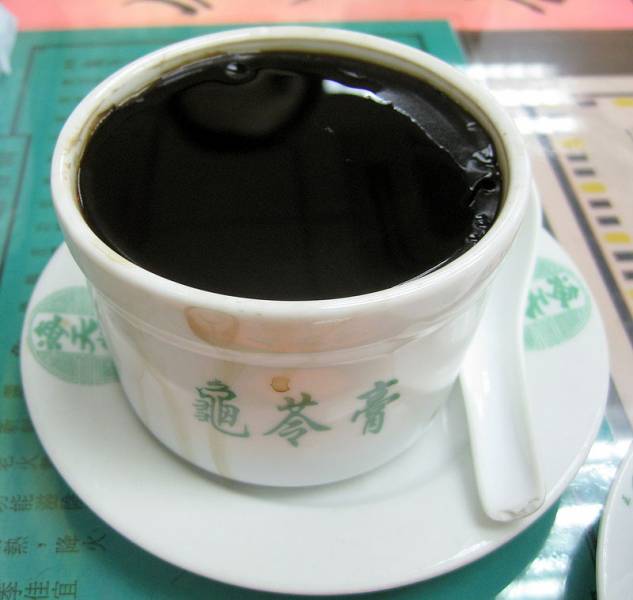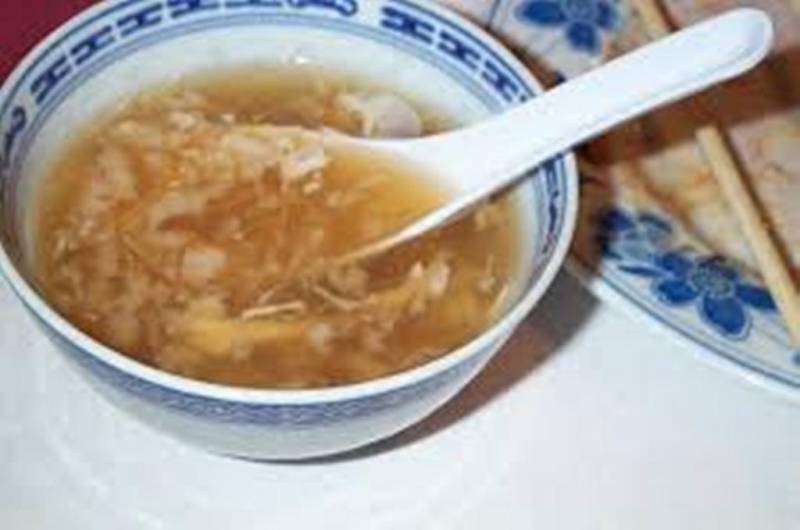Contents
In every culture, at least one food requires courage from those who try it for the first time. Take French cuisine, for example. You have to wonder who decided that only the common garden snail could do proper justice to a garlic and butter sauce. Yet escargot tastes delicious – once you forget that your appetizer spent many happy days spreading mucus trails and feeding off decayed plants.
1. Turtle Jelly
Like Shark Fin Soup, Turtle Jelly is another naughty delicacy that doesn’t impress the WWF. Hong Kong and China’s penchant for these shelled creatures is having a devastating effect on their numbers and you should give Turtle Jelly soup a miss. You can spy the Turtle Jelly shops in Hong Kong by the empty turtle shells piled up inside. The turtles are boiled for up to twelve hours, mixed with herbs and lotions and served up as a type of jelly-like soup. The draw here is, again, the medicinal properties, certainly not the taste.
2. Chicken Testicles
Our second entry in ‘parts of the chicken you didn’t think you could eat’, Chicken testicles pop up on many a Hong Kong menu. The testicles themselves are boiled or fried whole and look a little like chipolata sausages, with a soft interior. They’re served with rice, or noodles and broth.
3. Snake Soup
A favourite winter warmer in Hong Kong, snake soup is considered somewhat of a gourmet dish. Most of the city’s snake meat is now delivered chilled or frozen from China, but to try the meat and the soup at its best you need to have it fresh, which means braving the handful of live snake restaurants that still exist in Kowloon. Here, you pluck your favourite python or cobra from behind a cage and watch him slither to the chopping block, with more unusual snakes attracting heavier price tags. The soup comes with the snake shredded inside, although, if you’re braver, you can try sliced snake in a host of other dishes. As it seems with almost all exotic meats, many say it tastes like chicken.
4. Stinky Tofu
Stinky tofu (also known by its Chinese name, Chou Dofu) is one of those foods that it’s impossible to feel neutral about – people either love or hate it. Asian tourists who follow their nose will have no trouble locating a stinky tofu stand – street hawkers who sell it have been fined for breaking air pollution laws.
5. Sea Cucumber
Considered a delicacy, these medieval pickles are often served during special occasions. When faced with danger in the ocean, they’ll propel themselves to safety by expelling all their guts. Maybe that’s why they’re free from cholesterol, sodium, carbohydrates and fat.
6. Thousand Years Egg
If you can brave a thousand-year-old egg, you can consider yourself an honorary Hong Konger – these things are potent. Made from duck or quail eggs, the eggs are buried in a clay, sand and salt mixture for a couple of months, melting their insides to jelly. The shell of the egg turns a browny, black, but it’s the inside where the real surprise awaits. The yolk turns a dark green and boasts a powerful smell of, well, eggs that have sat around for a couple of months. The eggs can be picked up whole from street vendors around the city, or found sliced up in noodle dishes.
7. Shark Fin Soup
One of the world’s most controversial dishes, demand for Shark Fin Soup in Hong Kong and China is apparently critically reducing the number of sharks in the oceans. Chopping up Jaws may not seem like an issue to lose any sleep over, but the lack of sharks is causing critical changes further down the food chain. The soup itself is mostly prized for its premium price tag and is a firm fixture on wedding and graduation party menus. The taste is by no means disgusting, but nor is it special, just slightly fishy.
8. Fried Bee Pupae
Bee pupae are rich in nutrition (with high protein and low fat), and are used as an ingredient for cooking dishes. The most common way to eat bee pupae is to fry them golden. There are many other ways of eating bee pupae, such as steamed bee pupa, stir-fried bee pupa, crispy bee pupa cake, and cold fried bee pupa in a sauce.
9. Bird’s Nest Soup
One of Hong Kong’s most prized delicacies, Bird’s Nest Soup is a gelatinous mix of chicken broth and swiftlet’s (a type of bird) saliva. That’s right, you’re eating swiftlet’s spit. Swiftlets make their nests from saliva and each year, after the bird has left the nest, it’s harvested and added to the soup, which, like many things in the city, is famed for its health benefits.
11. Duck Head
This snack is made by adding spices and herbs to a stir-fried head of a duck. It’s a well-known dish in many parts of China. The snack is prepared by first leaving frozen duck heads under running water for some three hundred and sixty minutes, before stir-frying the heads with some herbs and spices.
12. Sea Urchin
Next on the menu is another Shandong delicacy. Sea urchins are a pretty versatile ingredient; eaten in many different recipes and styles across Europe, South America and Asia. Although Japan is the world’s biggest consumer, they’re eaten in China too. Sliced in half, the urchin’s shell acts as a bowl in which eggs are mixed with the body of the urchin and then steamed. The flavor is similar to smoked salmon and scrambled egg, though the dark, slimy insides of the urchin are a little off-putting. In China, the tactile properties of food are more important than anywhere else, and the snot-like texture of urchins is savored, but for western tastes this might also be a little unappetizing.
13. Chicken or Duck Blood Soup
Chicken or duck blood soup is a common dish — or even a treat in the past — to Shanghainese. The dish is considered by many as a shi liao food, or food used as medicine. Usually, this kind of soup has a weird blood taste but this one is very fresh with a clean flavor. The blood chunks are very tender.












Leave a Reply